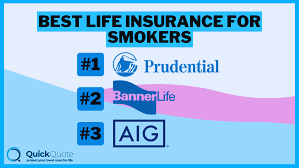Introduction:
As a self-employed individual, you wear many hats—from CEO to marketer to accountant. But what happens if an unexpected illness or injury prevents you from working? This is where disability insurance becomes essential. In this comprehensive guide, we’ll explore 20 key insights about disability insurance for the self-employed, helping you make informed decisions to protect your income and future.
1. Understanding Disability Insurance
Disability insurance provides financial protection by replacing a portion of your income if you become unable to work due to a disability. For self-employed individuals, this coverage is crucial since there’s often no employer to provide support during tough times.
2. Why Self-Employed Individuals Need Coverage
Self-employed individuals often lack a safety net. Unlike traditional employees, you won’t receive paid sick leave or benefits if you can’t work. Disability insurance can help you maintain your lifestyle and meet financial obligations.
3. Types of Disability Insurance
There are two primary types of disability insurance:
- Short-Term Disability Insurance: Offers coverage for a limited period, typically 3 to 6 months.
- Long-Term Disability Insurance: Provides coverage for extended periods, often until retirement age.
4. Choosing the Right Policy
When selecting a policy, consider factors such as coverage limits, waiting periods, and benefit durations. Evaluate your monthly expenses to determine how much coverage you need.
5. The Importance of Income Replacement
Aim for a policy that replaces 60% to 80% of your pre-disability income. This will help you cover essential expenses, such as rent, utilities, and groceries.
6. Understanding the Waiting Period
Most policies have a waiting period (also known as an elimination period) before benefits kick in. Common waiting periods range from 30 to 180 days. Choose one that aligns with your savings and financial situation.
7. Look for Non-Cancelable Policies
Non-cancelable policies guarantee your coverage as long as you pay your premiums. This is crucial for self-employed individuals who want to ensure long-term protection.
8. Consider Residual Benefits
Residual benefits provide partial income replacement if you can work part-time but are still affected by your disability. This feature can be invaluable for self-employed workers looking to gradually return to their business.
9. Tax Implications of Disability Insurance
If you pay for your disability insurance with after-tax dollars, the benefits you receive are typically tax-free. This can be a significant advantage for self-employed individuals.
10. Assess Your Current Health
Your health status can significantly impact your premiums and eligibility for coverage. Be honest about your health when applying for insurance to avoid potential issues down the line.
11. Shopping Around for Quotes
Don’t settle for the first quote you receive. Compare multiple policies and providers to find the best coverage for your needs. Look for online comparison tools or consult with an insurance broker.
12. Read the Fine Print
Carefully review the policy details, including exclusions, definitions of disability, and any limitations. Understanding the fine print can prevent unpleasant surprises when you need to file a claim.
13. Seeking Professional Advice
Consulting with a financial advisor or insurance specialist can help you navigate the complexities of disability insurance and find the right policy for your unique situation.
14. Group vs. Individual Policies
Consider whether a group policy (often available through professional associations) or an individual policy is better for you. Group policies may be less expensive, but individual policies often provide better coverage and more customization.
15. The Role of Your Business Structure
Your business structure (sole proprietorship, LLC, etc.) can affect your disability insurance needs. Consult with a financial advisor to understand the best approach based on your specific setup.
16. Review Your Coverage Regularly
Your needs may change as your business grows. Regularly review your disability insurance policy to ensure it still meets your requirements and adjust your coverage as needed.
17. Plan for the Future
Disability insurance isn’t just a short-term solution. It’s part of a long-term financial strategy. Consider how it fits into your overall retirement and estate planning.
18. Understand the Claim Process
Familiarize yourself with the claims process for your policy. Knowing how to file a claim and what documentation is required can streamline the process if you ever need to use your benefits.
19. The Peace of Mind Factor
Having disability insurance provides peace of mind, knowing you have a safety net in place. This security allows you to focus on growing your business without the constant worry of what would happen if you were unable to work.
20. Take Action Today
Don’t wait until it’s too late. If you’re self-employed and don’t have disability insurance, now is the time to explore your options. Start researching policies, getting quotes, and speaking with professionals to secure your financial future.
Conclusion
Disability insurance is a critical aspect of financial planning for self-employed individuals. By understanding the ins and outs of this coverage, you can protect your income and ensure your business remains resilient in the face of unforeseen challenges. Take the necessary steps today to safeguard your future—because peace of mind is priceless.
By following these 20 insights, you can confidently navigate the world of disability insurance and make informed choices that align with your needs as a self-employed professional.



